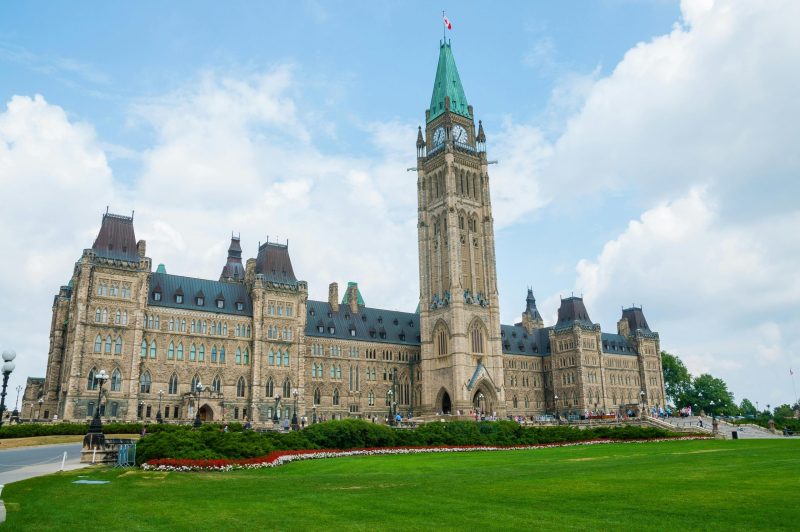While several key investments were advanced in the previous months, the Calgary Chamber continues to advocate for important initiatives to support the business community and its workforce.
ELIMINATING REGULATORY BARRIERS AND UNLOCKING COMPETITIVINESS
To secure Canada’s economic future, Finance Canada must focus on practical solutions that improve the conditions for private sector growth. Critical to achieving this is for Canada to once again become a destination for investment and re-establish its position as a tax competitive jurisdiction. Additionally, rising costs, tax changes and regulatory uncertainty are making it harder for Canadian companies to invest, expand and innovate. At the same time, Canadians are calling for a balanced approach that reduces government spending without compromising essential services. By streamlining taxes, enabling smart regulation and ensuring fiscal responsibility, we can both unlock and attract private investment, grow the tax base and position Canada for long-term prosperity in a competitive global economy while ensuring we meet Canada’s climate objectives.
Commit to fiscal prudence by balancing spending with saving for the future and reducing the federal debt and deficit. This should include focusing on key fiscal anchors over the long term, such as lowering the debt-to-GDP ratio, managing debt servicing costs, securing a AAA credit rating and ensuring strong balance sheets, avoiding untenable future tax burdens.
Withdraw legislation that undermines affordability, reliability, predictability and regulatory certainty, particularly for decarbonization-related to policies, including the Clean Electricity Regulations and the Greenhouse Gas Emissions Cap for the Oil and Gas Sector. Further to this, Amendment 236 to the Competition Act introduced in Bill C-59 should be withdrawn, given that it has put Canadian companies engaged in decarbonization initiatives at a significant disadvantage relative to their peers in other jurisdictions. Canada needs pragmatic, market-driven solutions that reduce emissions without sacrificing energy security, competitiveness, or economic growth.
Ensure eligible businesses can receive the existing clean economy investment tax credits (ITCs) and carbon contracts for difference (CCfD) in a timely and efficient manner. This should include developing incentives that advance biofuel, low carbon fuel and sustainable aviation fuel, leveraging Canada’s agricultural and petrochemical expertise.
INVESTING IN TRADE-ENABLING INFRASTRUCTURE AND INTERNATIONAL RELATIONSHIPS
Trade is foundational to Canada’s economy, but aging infrastructure, fragmented internal rules, tax policy and regulatory inefficiencies are limiting our global competitiveness. Rising costs, strained supply chains and shifting U.S. trade dynamics, underscore the urgency to act. By investing in modern trade infrastructure, reducing barriers at home and abroad and developing a cohesive industrial strategy, the federal government can boost productivity, attract investment and position Canadian businesses for long-term growth.
Continue to support programs that accelerate international trade, connecting Canadian companies with international markets and attracting global companies to invest in Canada. With ongoing tariff uncertainty between Canada and the U.S., it is imperative we deliberately diversify our current trade opportunities.
Improve domestic policy, addressing regulatory burdens and restrictive tax structures impacting Canadian competitiveness. Evaluate corporate tax rates to ensure Canada is competitive with comparative jurisdictions, enables businesses to grow and becomes a top destination for foreign businesses to scale and invest.
Treat the elimination of interprovincial trade barriers as a national economic imperative. Since April, the federal government has taken meaningful steps with provinces to address internal trade challenges, but momentum must be maintained. Federal support should be used strategically through targeted infrastructure investments – such as rail, highways, aviation and inland ports. Internal trade inefficiencies cost the Canadian economy billions in lost productivity and opportunity each year. By enabling freer movement within our own borders, Canada can enhance competitiveness, reduce costs for businesses and consumers, and strengthen national economic resilience. This also extends to having all provinces sign on to the passport system established by the Canadian Securities Administrators to increase the ease of capital formation in the country.
ENABLING ENTREPRENEURS TO THRIVE IN A GLOBAL ECONOMY
Despite a growing population, there are 100,000 fewer entrepreneurs in Canda than two decades ago. Rising costs, access to capital and lagging technology adoption are stifling growth, particularly among small and medium-sized businesses that make up over 99 per cent of Canada’s business community. To reverse this trend, the federal government must lower barriers to business success – by reducing financial pressure, expanding connectivity and technology supports and fostering a more competitive environment. Supporting entrepreneurs is not just about start-ups, it’s about unlocking productivity, innovation and sustainable economic growth in a rapidly evolving global market.
Reduce the small business tax and increase the Small Business Tax Rate threshold currently at $500,000 to $750,000 and index the threshold to inflation moving forward. Additionally, lower Employment Insurance premium rates for small businesses to provide direct savings to businesses and employees leading to reduced expenses and increased cash flow. These changes will decrease financial burden on small businesses and increase capital availability.
Continue to address connectivity issues in rural, Indigenous and isolated communities and enhance connectivity with the Canadian Radio-television and Telecommunications Commission Broadband fund, by increasing core infrastructure builds and support the use of versatile technologies. This is fundamental to everyone having equitable economic opportunity.
Establish a program dedicated to supporting technology adoption across sizes and sectors of business in Canada. Canada’s technology aptitude is low – despite the fact we are global leaders in the development of AI – especially among small and medium-sized businesses. Despite previous programs like Canada Digital Adoption Program (CDAP), there remains a gap when in delivering a holistic and accessible technology adoption strategy for Canadian businesses.
Honour the extension of the Accelerated Investment Incentive put forth in the 2024 Fall Economic Statement. Without this incentive, businesses have less capacity to invest in the infrastructure, technology and innovation required to strengthen supply chains, enhance digital capabilities and adapt to challenges like climate change and cyber threats. The incentive has enabled businesses across all sectors to reinvest tax savings into critical assets, technology upgrades and workforce development.
TALENT DEVELOPMENT AND ATTRACTION
Canada’s long-term prosperity hinges on a productive, inclusive and resilient workforce. Despite having one of the most educated populations in the OECD, Canada continues to underperform on productivity measures, which is of significant concern because higher per capita productivity is directly correlated with economic growth. Compounding the talent situation is the fact the national unemployment rate sits at 6.9 per cent, at the same time as there remains a persistent mismatch between available skills and job vacancies – which isn’t helpful for workers or businesses. We need coordinated action between business and government to strengthen skills development, improve workforce participation and align immigration and labour strategies. Doing so will not only unlock economic potential and improve the quality of life for Canadians through higher wages, more meaningful work and greater prosperity.
Enhance measures to address the labour shortage and set newcomers up for success. This will help businesses address the ongoing skills gap and allow them to develop talent without removing people from the workforce. With declining birthrates, immigration will continue to play an important role in meeting Canada’s labour needs.
Legislate credential harmonization to facilitate labour mobility in the trades and professional designations. This means working with the provinces and professional associations to set timeframes and processes to decrease the barriers to labour mobility from coast-to coast-to-coast, encouraging a system of mutual recognition.
Collaborate with businesses to understand their temporary foreign worker requirements. This includes identifying program changes that will support business growth, such as increases to provincial nomination limits, extending the time workers are eligible to remain in Canada, reducing the cost and complexity of performing a Labour Market Impact Assessment and ensuring timelines for visa approval and other bureaucratic immigration processes are not an undue barrier to entry.
Increase funding for immigrant settlement agencies in regions experiencing high rates of secondary migration. As newcomers increasingly relocate from their initial port of entry to other communities in search of housing, employment and community support, local settlement agencies are facing growing service demands without corresponding increases in funding. Targeted, stable funding will ensure these agencies can meet growing needs so that newcomers can participate fully in their new communities.
STRENGTHENING OUR COMMUNITIES TO SUPPORT WELL-BEING
Canada’s long-term prosperity depends on livable, safe and connected communities where people can access affordable housing, reliable infrastructure and a high quality of life. As the population grows, demand for housing, transportation and community infrastructure is outpacing supply. When communities thrive, so does the economy, workers are more resilient, employers can attract and retain talent and regions can attract investment. Advancing community prosperity must be treated as a national economic priority and an economic imperative.
Work with all levels of government to prioritize the expansion of housing starts across the country through strategic tax measures and direct funding programs. This includes exploring the feasibility of eliminating the general sales tax on both the construction and purchasing of specific housing types, beyond rebate measures currently existing. It should also prioritize financial support for non-market housing to ensure it is available where it is most needed. Support for modular housing and innovative construction technologies and methods must also be considered, as well as long-term solutions to ensure that Canada’s labour-force can support the significant increase in housing starts that our country will require over the next five to 10 years.
Develop a granting program to support small businesses in mitigating the impact of safety and crime on their business and the broader community, providing funding for basic physical safety infrastructure (i.e., CCTV cameras, lighting and wayfinding), to keep their businesses and our communities safe. With nearly 45 per cent of small businesses across Canada reporting crime or safety issues in 2024, double the rate from 2023, targeted support is urgently needed to keep businesses and communities safe.
Establish a dedicated Urban Infrastructure Renewal Fund with an investment of $2 billion annually over four years to support upgrades to water, roads, transit and utilities in Canada’s major cities, helping urban centres modernize aging infrastructure, reduce capital maintenance backlogs, and create the circumstances for shovel-ready projects across Canada. The City of Calgary has identified its infrastructure gap at over $7.7 billion.
Unlock funding that advances infrastructure essential to sport, entertainment, arts and culture and tourism, recognizing employees seek businesses located or accessible to vibrant and welcoming communities. This includes $103M over four years for the Arts Commons Transformation project a catalyst for downtown revitalization that will generate economic activity, support the creative sector and attract residents, visitors and talent to Calgary’s downtown.
Invest in transportation infrastructure that connects Calgary’s Airport with downtown and to other jurisdictions, enhancing the city’s position as a hub for regional tourism. Continue support for the Green Line LRT project, noting the connection between productivity and robust transportation infrastructure, which also ties to housing affordability.







